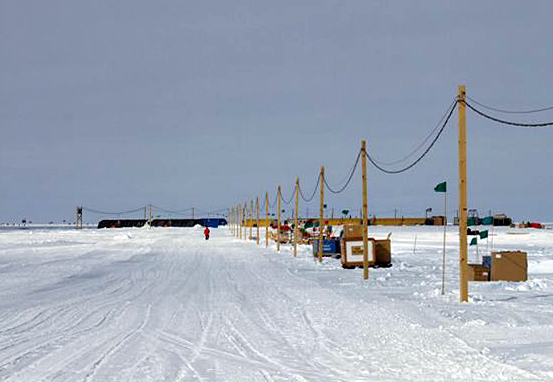Page 2/3 - Posted January 31, 2011
WAIS Divide ice core expected to yield best greenhouse gas record to dateThat detailed record will help answer a slew of questions scientists still have about the relation between CO2 and changes in temperature. Key among them is the issue of why it appears increased carbon dioxide lags changes in temperature. Subtle, cyclical changes in Earth’s orbit are responsible for the natural wax and wane of the ice ages, processes that take place over thousands of years. “By giving better CO2 records, with higher time resolution, [the] WAIS Divide [core] should be able to more clearly [show] subtle features that may better help us understand these slower changes,” said Richard Alley “During the ice ages, there were shorter-lived, sharper climate jumps,” added Alley, a principal investigator on the WAIS Divide project. “Some of these did affect CO2, so getting high-resolution records should allow us to see how things behaved when the changes were closer in speed to what we’re causing, which may be a more useful test of our understanding.” In addition to the atmospheric gases trapped in the ice, researchers also analyze dust and chemicals found in the 12.2-centimeter-wide cylinders of ice. The dust and chemicals are indicators of past climate, while the gas is a sample of the ancient atmosphere. Most scientists agree that increases in greenhouse gases like carbon dioxide, as well as the more powerful but shorter-lived gas methane, from human industry are responsible for heating up the planet and causing long-term changes in climate. Shorter-term symptoms include wild swings in weather — extreme winters as well as sweltering summers — and intense storms. The United Nations World Meteorological Organization Taylor said that by understanding how natural changes in greenhouse gases influenced climate in the past, scientists would be able to do a better job of predicting future climate changes caused by the emission of greenhouses gases by human activity. “It is sort of like studying a clothes washer,” he explained. “If you do a few loads of laundry, you learn that the rinse cycle comes after the wash cycle. “You can also learn about natural climate changes using an ice core to study past climate cycles, which helps us predict what the effect of the carbon dioxide that humans are putting into the atmosphere now will have on the climate system, which is sort of like tossing bricks in the washer along with the clothes.” Getting a ringside view into the natural cycles of the Earth’s climate is no simple task. It took most of two Antarctic summer seasons just to construct a semi-permanent field camp 1,600 kilometers from the USAP’s logistical hub at McMurdo Station After a pilot hole was drilled in the 2006-07 season, major coring operations began the next year using a special drill that was designed and built by Ice Drilling Design and Operations group, part of the Ice Coring and Drilling Services (ICDS) at the University of Wisconsin-Madison “This achievement means so much to us because it did not come overnight. It required continuous dedication, numerous sleepless nights, and an extraordinary amount of hard work,” said Alexander Shturmakov, director of engineering and research for IDDO.Back 1 2 3 Next |



For USAP Participants |
For The Public |
For Researchers and EducatorsContact UsNational Science FoundationOffice of Polar Programs Geosciences Directorate 2415 Eisenhower Avenue, Suite W7100 Alexandria, VA 22314 Sign up for the NSF Office of Polar Programs newsletter and events. Feedback Form |




